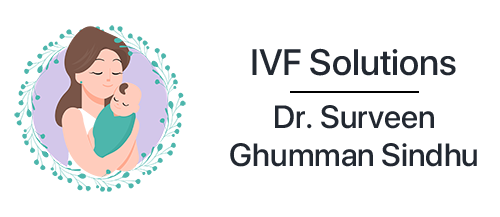By Dr. Surveen Ghumman Sindhu: Thin endometrium is a source of concern as implantation would not occur while attempting an IVF, IUI or a natural conception. While evaluating the endometrium there are a few parameters to be taken into account
Endometrial parameters for assessment:
- Thickness – It should be at least 8 mm thick 9-12 is ideal. Anything less tan 6 is not good in mid cycle with good follicle
- Morphology – It should be trilaminar ie three layered, with outer hyperechoic layer
- Blood flow – Blood flow should be present in the innermost zone that is zone 4.
A persistently thin endometrium in the presence of a good follicle and good estradiol levels, shows some local problem
Cause of thin endometrium:
Thin endometrium can occur because of three factors-
1. Estradiol which makes endometrium grow is less
2. Blood flow is less – hence although estradiol levels being normal they do not reach endometrium to act because of lack of blood flow
3. There is an endorgan problem with the endometrium itself which causes it not to respond to normal estradiol levels. Local problems in endometrium can be because of
- Previous surgery which may have destroyed endometrium
- Intrauterine adhesions due to infections like tuberculosis or a previous D&C.
- Progesterone or estrogen receptor defect
Diagnosis:
Estradiol levels: Poor estradiol levels occur if there is a poor ovarian reserve and follicle is not properly formed. In order to diagnose this a simple estradiol level is done. Exogenous estrogens can be added to see if endometrium responds by growing.
Doppler & 3 D ultrasound: Blood flow can be checked by Doppler. A 3-D vaginal ultrasound is also very helpful to evaluate endometrial lesions and blood flow. If it is not either of the two it is a problem within the endometrium
Endometrial biopsy: Endometrial biopsy could diagnose chronic endometritis which can cause this.
Hysteroscopy: Hysteroscopy can detect adhesions
Treatment:
Treatment depends on cause which must be diagnosed first.
- Low estrogen – give exogenous estrogen
- Poor blood flow – vasodilators like sildenafil if there is a problem in blood flow.
- End organ failure – It is difficult to treat an endorgan failure if there is severe destruction or there is a receptor defect. Intrauterine adhesions can be treated by hysteroscopic adhesiolysis where under the vision of a camera introduced in the uterus adhesions are cut.
Following this repeated cycles with estrogen supplementation are given to grow the endometrium and improve blood supply. This succeeds if the adhesions are not dense and fibrotic and destruction is less.
Protocol for checking and enhancing endometrial growth:
The following protocol is used by me to check endometrial growth.
Estradiol valerate 2 mg daily is given for 25 days. Evaluation of endometrium by a trans vaginal scan is done after 2 weeks If endometrium as become adequate we add progesterone – Medroxy progesterone acetate 10 mg twice a day with estradiol from day 16 to 25. If it is not thick we increase dose of estradiol valerate and re-scan after 6 days. In case lining does not increase it may be en endorgan failure and we need to do a hysteroscopy to rule out physical lesions like fibrosis.
Freezing of embryo in case of thin endometrium:
In case endometrium is thin during an IVF cycle embryos are frozen and transferred in next cycle when endometrial development is adequate
Recent advances:
1. Granulocyte colony stimulating factor G CSF: This is a material which is instilled within the uterus before giving HCG to improve endometrium It is said that this causes endometrium to grow and pregnancies have been reported.
2. HCG: minimal doses of hCG are instilled within the uterus which stimulates endometrial growth.
3. Endometrial scratch: Slight trauma like a endometrial biopsy in previous cycle has been known to increase the implantation rate and grow endometrium due to certain enzymes and growth factors being released
4. Endometrial receptivity assay (ERA): here a biopsy is taken and sent for receptor analysis to identify if progesterone recptors are adequate after progesterone supplementation. This determines how may days of progesterone is needed before frozen embryo transfer
Thin endometrium is difficult to tackle as cause may not be identified and if identified may be difficult to treat.

